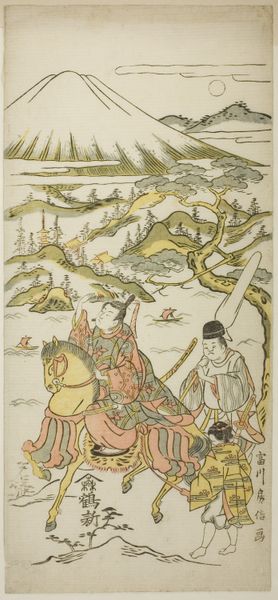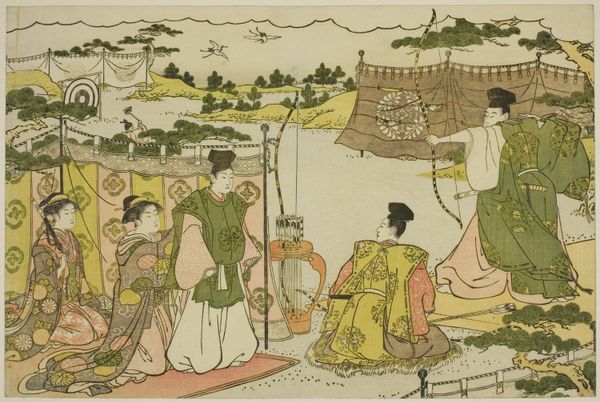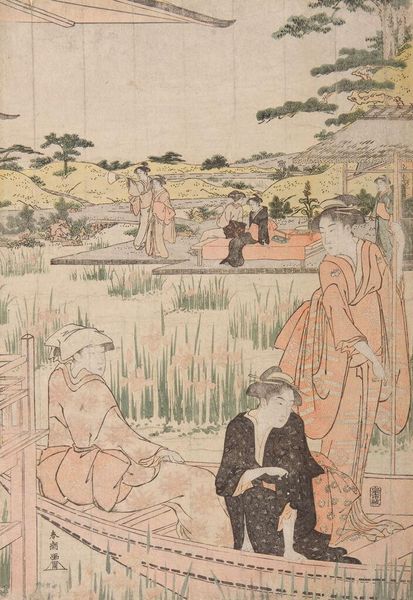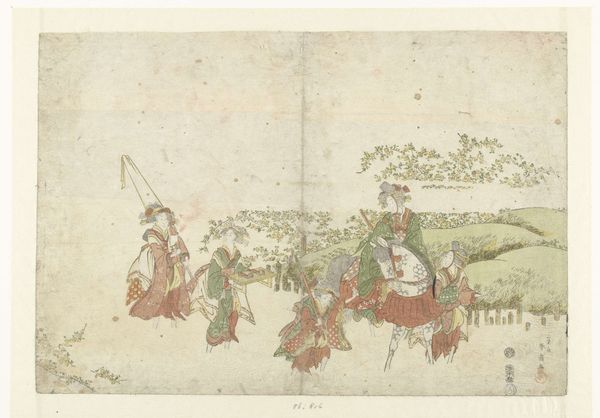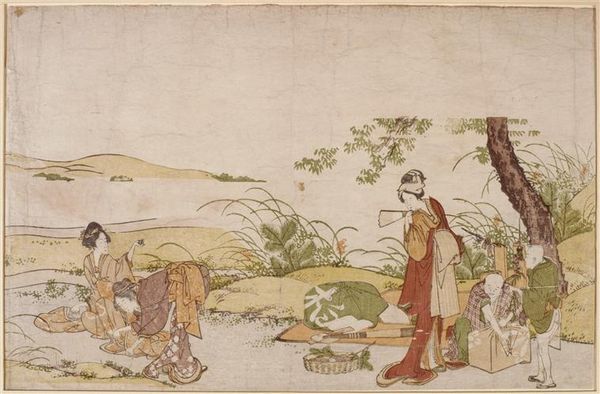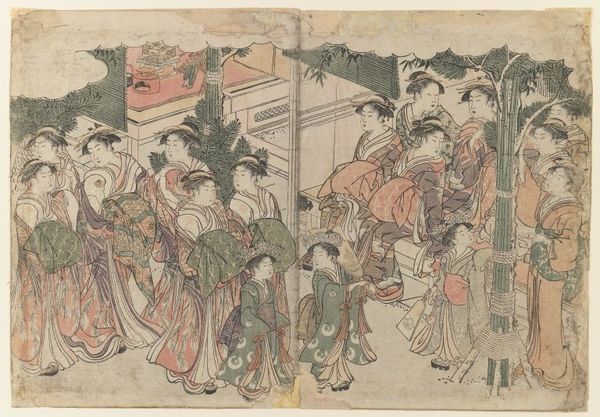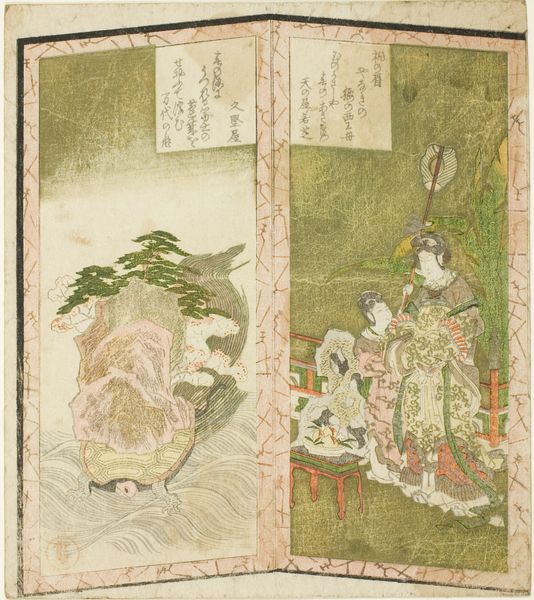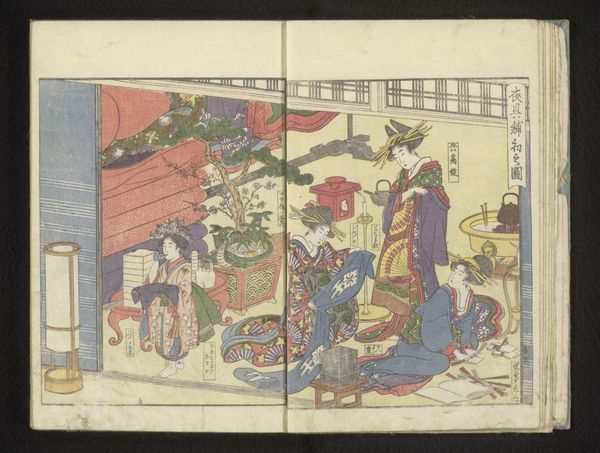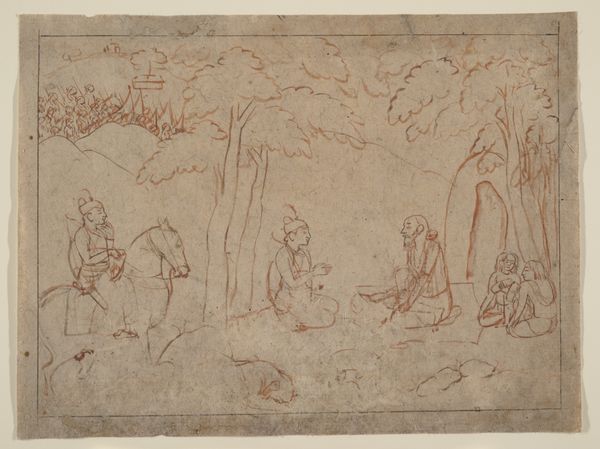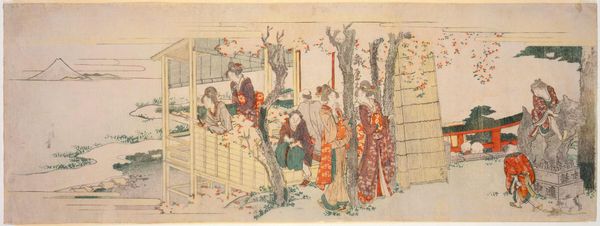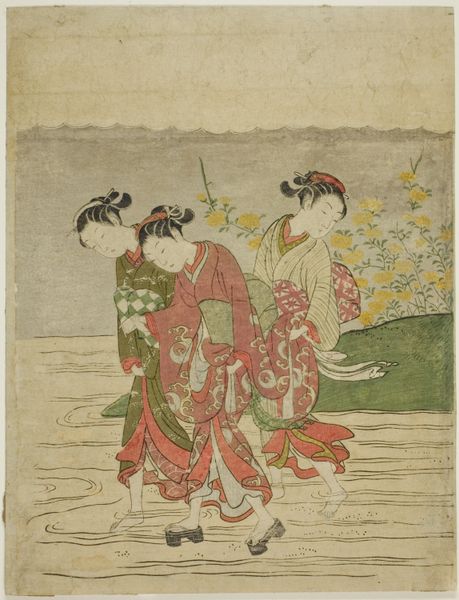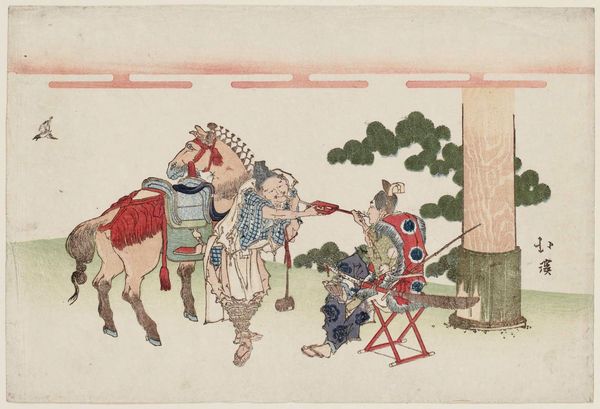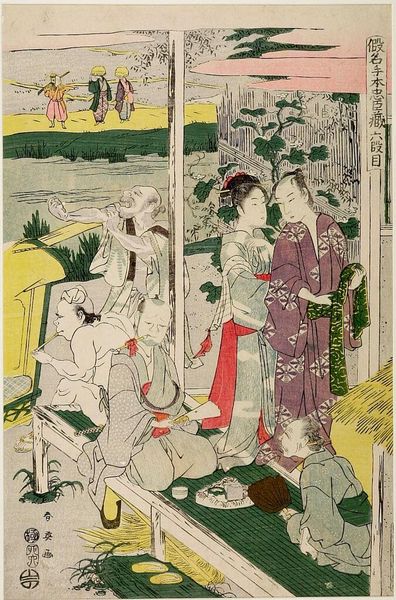
The Emperor Aurangzeb Carried on a Palanquin 1675 - 1745
0:00
0:00
painting, watercolor
#
water colours
#
painting
#
landscape
#
figuration
#
oil painting
#
watercolor
#
horse
#
men
#
islamic-art
#
miniature
Dimensions: H. 22 7/8 in. (58.1 cm) W. 15 1/8 in. (38.4 cm)
Copyright: Public Domain
Bhavanidas created this painting of "The Emperor Aurangzeb Carried on a Palanquin" around 1730 using opaque watercolor and gold on paper. It depicts the Mughal ruler Aurangzeb in procession, but it also subtly comments on the emperor's policies and the social conditions of the time. Notice the contrast between the opulence of the royal entourage and the austere figure of Aurangzeb himself. This was made in India, whose economic structures in the 17th and 18th century were defined by rich resources, but widespread poverty. Aurangzeb's reign was marked by military campaigns and strict religious policies, often at the expense of the empire's cultural and economic well-being. The image might reference this, showing the emperor as detached from the vibrancy of courtly life. To fully understand this artwork, research into Mughal court traditions, religious policies under Aurangzeb, and the socio-economic conditions of 18th-century India would be invaluable. The painting serves as a visual record of its time, shaped by and reflecting the complex social and institutional forces at play.
Comments
No comments
Be the first to comment and join the conversation on the ultimate creative platform.
